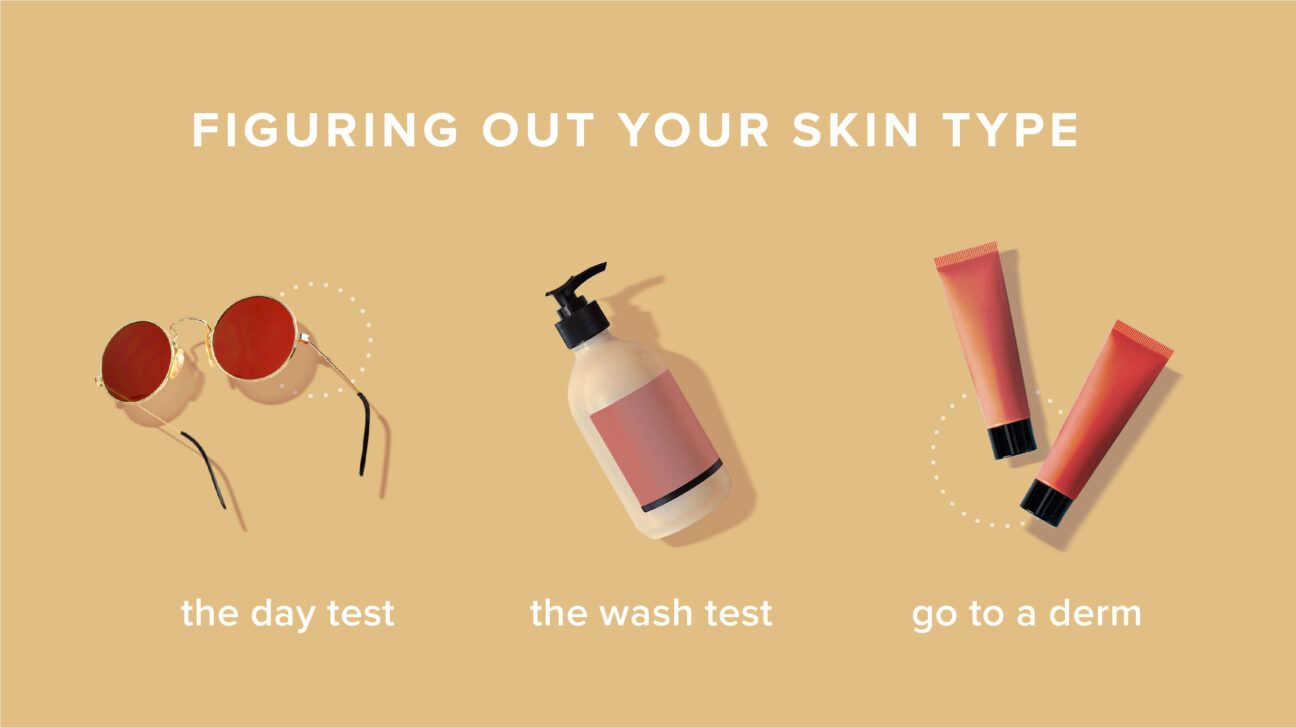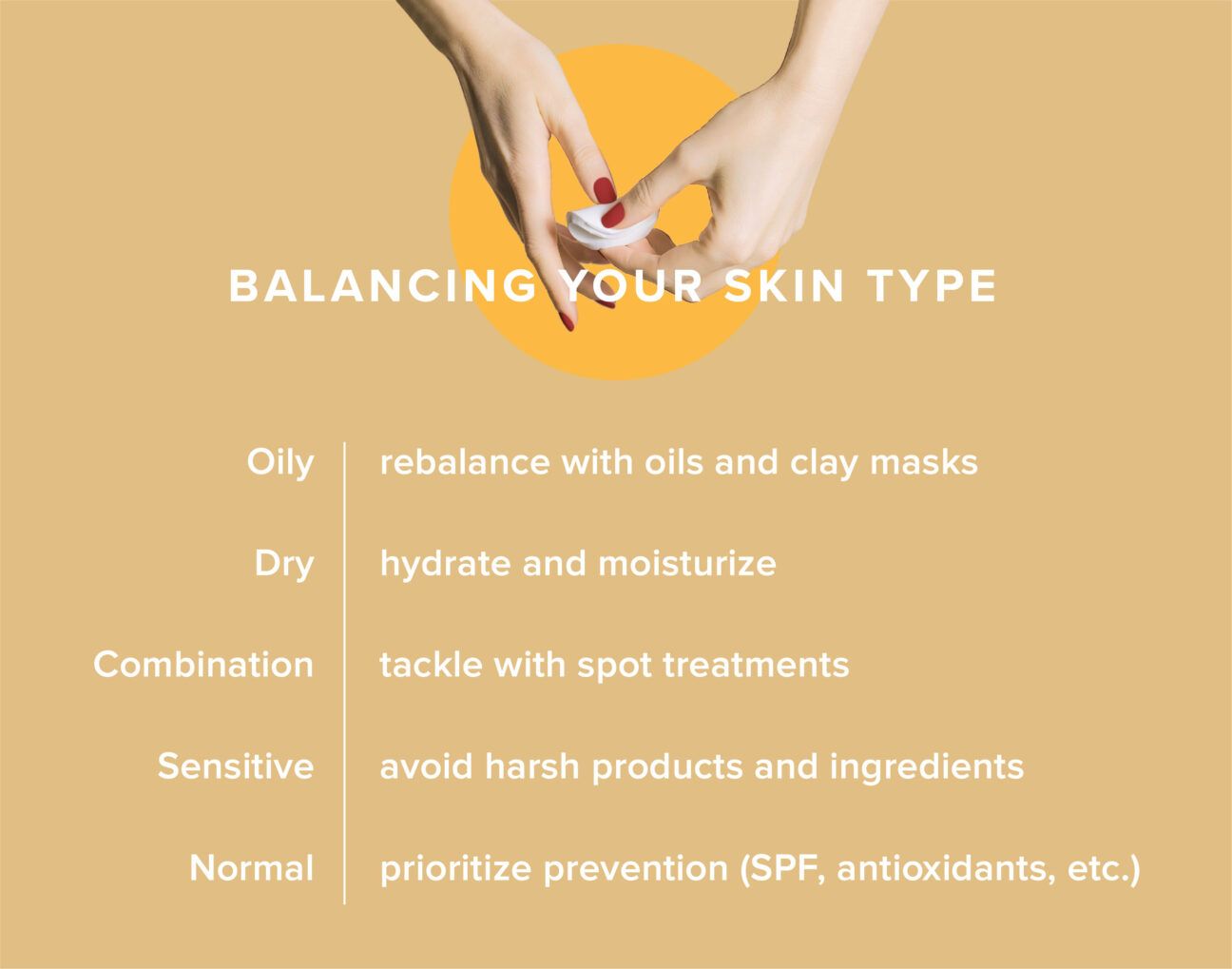There are several tests that can help you determine your real skin type, such as the day test or the wash test. A dermatologist can also examine your skin and recommend products that work with it rather than against it.
Maybe you know your type when it comes to your coffee order, but you’re a little less sure about what kind of skin you have.
Got parched cheeks that require constant hydration? Or a combination situation? Whatever it is, knowing your skin type can help you find the best care routine.
We’ve got a few solutions for figuring out your skin’s personality.

1. Take the day test
“The easiest means to determine your skin type is to see how it performs from morning to evening on a typical day,” says Melanie Palm, MD, a board certified dermatologist and cosmetic surgeon.
| Results (at the end of the day) | Skin type |
|---|---|
| Does your face feel oily and look shiny? | oily skin |
| Is your T-zone shimmering, but the rest of your face is mostly matte? | combination skin |
| Do you have minimal oil, flakiness, or redness or color changes, or none at all? | normal skin |
| Is your skin flaky or tight? | dry skin |
| Is your skin itchy or inflamed? | sensitive skin |
Keep in mind that the skin types mentioned here are classified by the skin care industry. They’re not medical terms.
Skin types mentioned in skin care product labeling, such as “for oily skin” or “for dry skin,” are not subject to any guidelines or standardization. That means products marketed to a particular type may produce a wide range of results — from product to product and from person to person.
2. Try the wash test
A day-long test may not make sense if you shower midday after a quad-killing session of indoor cycling or if you’re exposed to irritants like wind, bad weather, or raging sun on your evening commute. At any time, you can try this assessment and achieve similar results.
Wash your face with a mild cleanser and don’t apply any product or makeup. Wait 30 minutes and examine how your skin feels.
Try this test when your face feels relatively calm, meaning it’s not hot after a run or stinging from a fruit-enzyme peel.
3. Get your picture taken
A dermatologist may have certain photographic methods for helping to evaluate your skin’s behavior further if necessary.
“Vascular filters can zero in on excess or unhealthy blood vessel distribution — indicating sensitive, irritated, or rosacea-prone skin,” Palm explains. “UV-like filters can demonstrate sun damage and pigmentation.”
Other methods can highlight subtle changes in skin texture or pore size or even indicate oil production.
Your skin type can change over the yearsPregnancy, diet, location, and many other factors can change your skin type. The best way to gauge your skin is to know it! That means touching it (with clean hands) and really feeling out the temperature, texture, and buoyancy. A soft pinch test every now and then can also help you evaluate its hydration levels.
Once you understand your type, you can add products or care techniques to your arsenal that help you work with your skin’s unique characteristics.
Keep in mind that none of these behaviors are bad or need to be changed. Understanding your skin is all about giving it what it needs, not combating it.

We’ve all got natural oils, called sebum, on our skin. It comes from our pores’ sebaceous glands and it provides moisture. But we all produce oil in varying amounts and types.
Although oil protects our skin, it sometimes gets a bad rap. An excess amount can block your pores, leading to a blackhead or pimple. It can also result in shiny-looking skin.
If shine bothers you, Palm recommends blotting with regular tissue paper. “You don’t have to pay for expensive blotting papers,” she says.
5 solutions for oily skin breakouts
- reach for products that are labelled as “oil free”
- avoid alcohol based cleansers
- use a gentle facial wash
- try not to touch your face too much
- avoid sleeping in your make-up
If you think overproduction of oil is causing skin issues, Palm recommends talking with a dermatologist about the possibility of taking oral medications or using topical applications that might help keep oil production in check.
The American Academy of Dermatology Association (AAD), also suggests washing your face in the morning, the evening, and after exercise. They recommend that you avoid scrubbing, as it can irritate the skin.
Just as some folks produce a little extra sebum, others have an underproduction of it, leaving them with dry skin.
Age can also affect your skin’s moisture level. According to the AAD, most adults 40 and older begin to notice increasing dryness in their skin. This has to do with the skin’s sebum production, which begins to decrease around this time.
The AAD mentions that environmental factors, such as low temperatures, can also impact your skin’s moisture level. This means you may need to apply moisturizer more often to reduce dryness during the colder seasons.
“Look for moisturizers with hyaluronic acid, ceramides, or free fatty acids,” Palm says. You’ll also want to make sure you layer on your serums and moisturizers from thinnest to thickest, allowing for maximum product penetration.
5 solutions for dry skin
- use no-rinse cleansing creams or oils
- invest in a humidifier
- avoid excessively hot water while bathing or showering and protect your skin in cold weather
- use a gentle cleanser and fragrance-free products, when possible
- try an overnight hydration product or sheet mask
Exfoliation can sometimes help with flaking, but be wary of over-exfoliating, especially with acids that claim to soften the skin. Even if your skin loves exfoliation, keep the process to one to two times a week instead of every day.
When to see a doctorIf dry, flaky, tight skin persists even after liberal moisturization, make an appointment with a dermatologist. They can help identify whether you have a condition, such as contact or atopic dermatitis, and, if so, how to treat it.
Dry skin is also more prone to developing itchy skin conditions like eczema and psoriasis.
If your face can’t seem to make up its mind as to whether it’s dry or slick, then combo skin is probably your sitch.
“There is no way to formulate moisturizers for combination skin,” Frey says. The trick is to find what works for you.
You might need to switch between products, alternating days or morning and night, to keep your skin healthy and happy. Or amp up spot treatment and use one product on your T-zone and another on your cheeks.
3 solutions for combination skin breakouts
- try a balancing toner
- spot treat acne-prone patches with a tea tree oil-based roll-on
- exfoliate with a gentle enzyme mask
If your skin tends to protest the products you place on it, you should proceed with caution when trying any new addition to your skin care routine.
4 solutions for calming sensitive skin
- choose products free of fragrance and dyes
- avoid ingredients like sulfates or parabens
- be mindful of how you react to essential oils
- patch test when trying a new product
“Carefully debut only one skin product at a time every two to four weeks and check for tolerance,” Palm says. She recommends dabbing a little on the jawline as a patch test and waiting a few hours — sometimes up to 24 — to see if you react before applying to your full face.
Skin with no major concerns is often described as “normal skin.” It’s often lower maintenance and typically doesn’t lead to excess oiliness or dryness.
If you have this skin type “make sure a great sunscreen and an evening product with a retinoid is part of your skin routine,” Palm says.
And even if your skin is tame, that doesn’t mean it can’t occasionally go through a dry, oily, sensitive, or combination spell. Our skin can change over time, with the seasons, and for many other reasons.
Skin type can change as often as the weather or stay relatively the same. This can make it difficult to determine what your skin type is.
Tests such as the day test or the wash test can help you learn more about your skin. A dermatologist can also examine your skin and recommend products suited to your skin’s needs.
Once you understand your type, you can add care techniques to your routine that help you work with your skin’s unique characteristics. Understanding your skin is all about giving it what it needs, not combating it.



